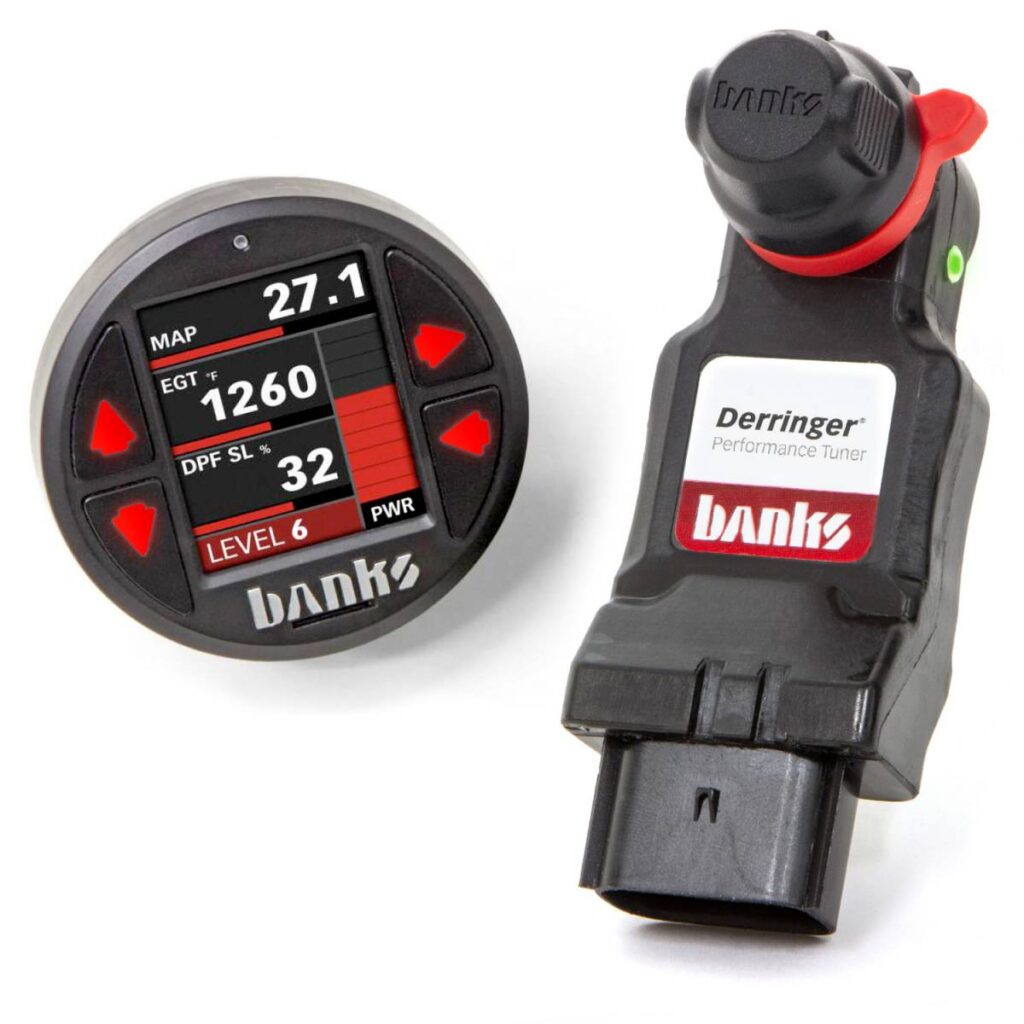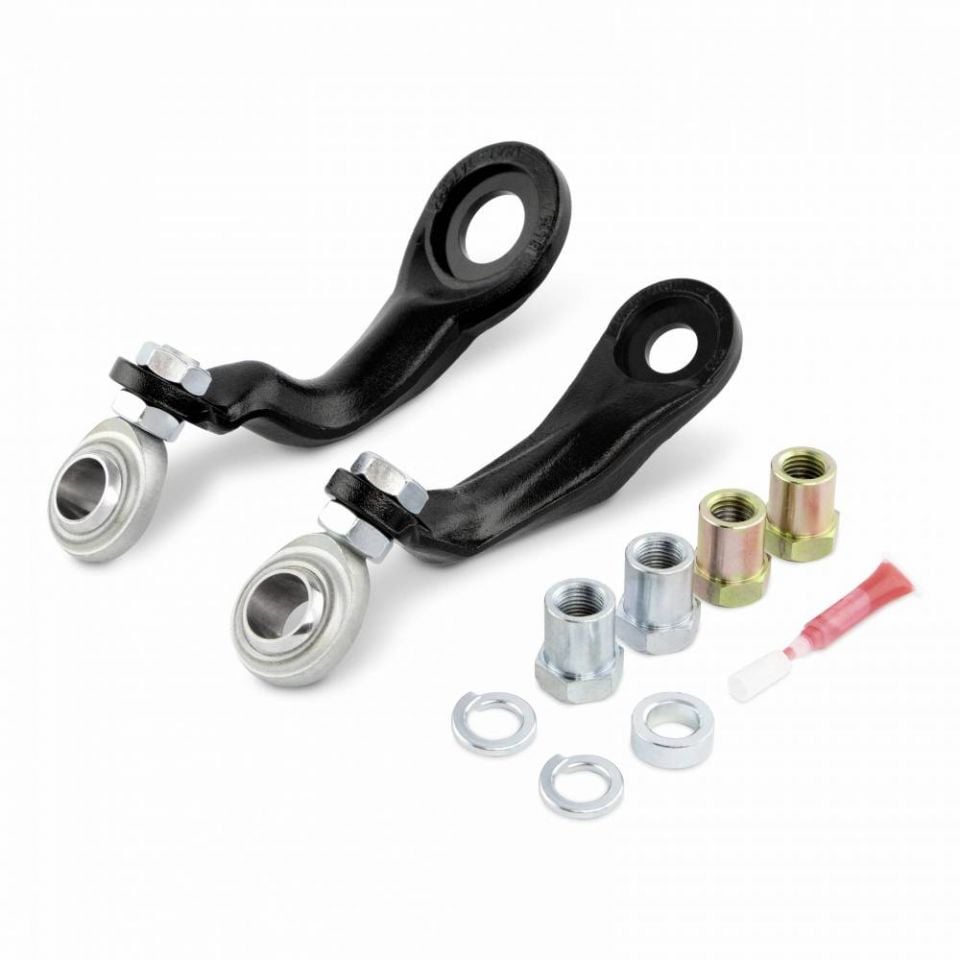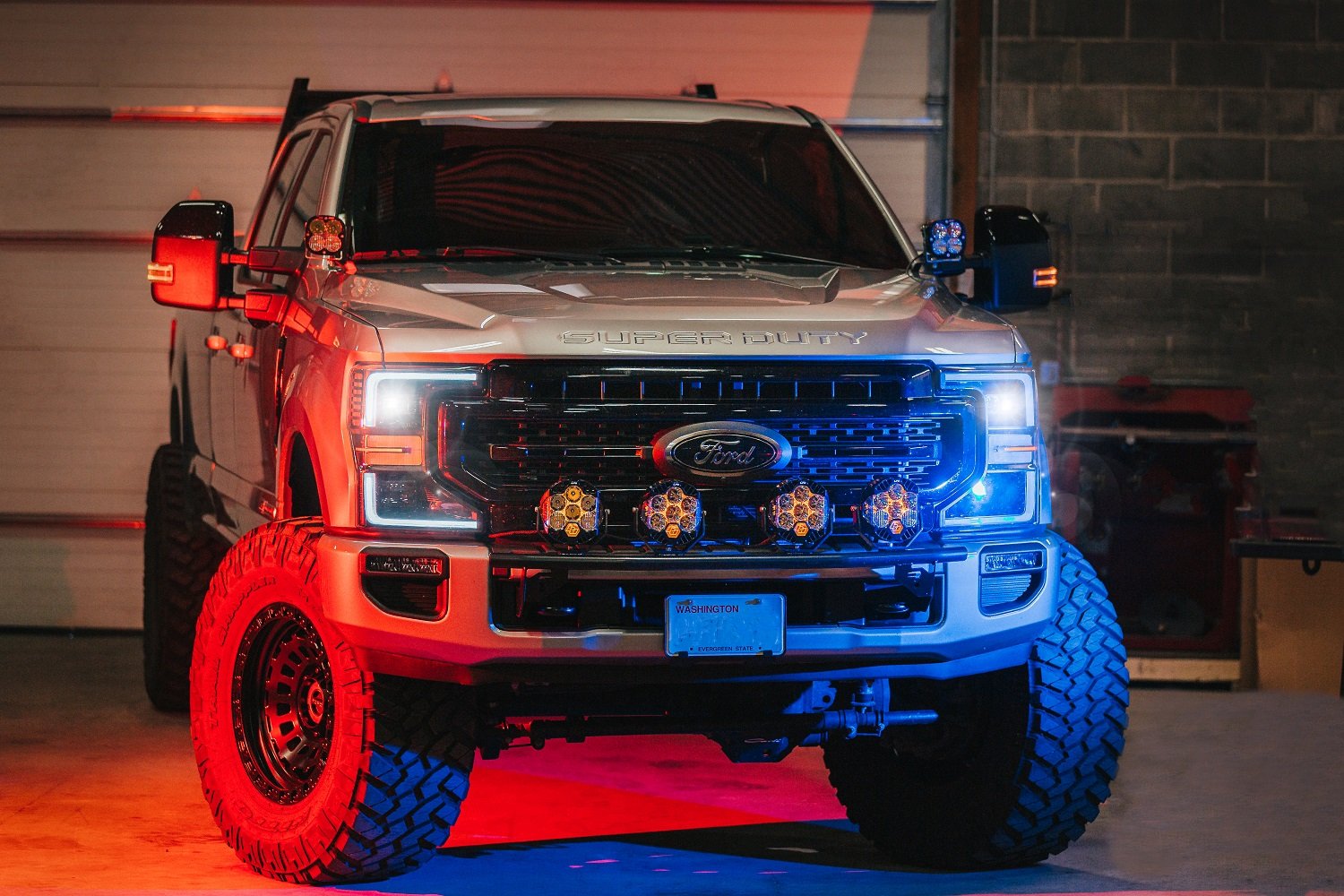There are many perks that come along with owning a brand-new truck, which include the latest creature comforts and technology, a powerful and efficient engine, and of course the ability to rip a small house off its foundation. But one often overlooked benefit to a new truck is the warranty that comes along with it, and the thousands of dollars it can save you in repair costs over the lifetime of the vehicle. Sure, it would be nice to hope that spending nearly $100,000 on a brand-new truck means you won’t have any problems, but that’s just not how it works. Every vehicle on the road will have a failure at some point during its life, and a warranty will cover a lot of repairs at no cost to the owner. Each manufacturer has different coverage terms, but typically a brand-new diesel truck will be covered bumper to bumper for 3 years and 36,000 miles, and the powertrain will be covered for five total years and 100,000 miles. The bumper-to-bumper covers pretty much anything that can go wrong with the truck: electrical problems, water leaks, you name it, its covered. The powertrain warranty on the other hand, usually only covers the engine, transmission, differentials, transfer case, and for a diesel, sometimes the fuel system, but thankfully this coverage extends for two more years, and it will cover some very expensive systems.
As a truck enthusiast, you’re gonna modify your truck. It’s just a fact of life. It could be performance upgrades that make the truck faster, suspension changes that make the truck taller and more capable off road, or even cosmetic changes that make your rig stand out from the crowd. Sadly however, the service department at your local dealership doesn’t appreciate the hard work you put into your upgrades, and if those changes are drastic enough, (deleting your emissions systems for example) you can also delete your warranty. Sure, the Magnuson-Moss Warranty Act stipulates that the dealer or manufacturer must prove the aftermarket parts you installed caused or contributed to a failure in some way, but that can be relatively easy for them. For instance, if you have a blown transmission and a twin turbo kit under the hood, odds are you’re paying for the replacement trans, and any other failures that occur in the drivetrain. Even if the transmission failure was caused by a known manufacturing defect, the increase in power from the twin turbo kit will be the scapegoat.
No Modifications at All?
So, are you limited to a bone stock truck for 100,000 miles if you want to keep your warranty intact? The simple answer is yes, it would be smartest to just leave it alone if you are concerned with long term warranty coverage and wait to install the twin turbos until you reach 100,001 miles. However, there are some areas you can upgrade right away to customize your truck to your liking without setting off alarm bells at the dealer, and luckily, that can involve adding horsepower as well.
In the old days of diesel performance, you could flash a hot tune on your truck from day one, and if you ever needed to visit the dealership for service, you could simply flash the truck back to stock and nobody would be the wiser. These days, computers are much more complex, and they are able to keep track of any aftermarket calibrations that have been flashed into them, even if you return the truck to stock. There’s just no hiding a tuned ECM from the dealership service techs. So, if you do experience a transmission failure, the dealership will do a quick check to see if the truck was ever turned, and if they find it was, they’ll deny your warranty claim. Believe it or not, a transmission can fail even without a tune. My 2020 L5P is equipped with the new GM 10L1000 transmission, and with only 35,000 miles on the odometer (of bone stock operation) the new 10-speed started exhibiting harsh shifting issues. When the dealer investigated, they concluded the transmission was on its way out, and it would need to be replace with a brand-new unit. While I don’t love the fact that the transmission failed so soon, at least its replacement cost was covered, and will continue to be covered until I reach 100,000 miles. Had I tuned the truck, the transmission certainly would have failed much sooner, and I would’ve paid out of pocket for the replacement.
Adding Power Under the Radar
OK, so re-flash tunes are out, but you still want a way to improve the driving experience of your truck and add some horsepower, so what can you do? Banks Power is here to help. The first thing you’ll want to look for is the Derringer inline tuning module. Depending on the application, it will add up to 81 horsepower and 144 lb.ft. of torque, and it does so by intercepting data coming from the MAP and Fuel Rail Pressure Sensor, and it modifies that data before it’s sent into the ECM, which effectively tricks the computer into supplying more boost and more fuel. Banks takes things one step further, and the Derringer also plugs into your OBD2 port so it can monitor engine conditions, so it only adds power when it’s safe to do so. This way, it can still defuel during a shift to keep the transmission happy, it will monitor EGT and keep temperatures within the factory limits, and it will only add power once the truck is fully warmed up. You can get the Derringer as a standalone unit, but its smarter to get the package which includes the iDash DataMonster so you can keep an eye on your engine’s vitals, like DPF soot load, regen status, engine oil temp, and just about any other parameter your engine’s computer can see.

One major complaint of just about any new truck, is the “Dead Pedal” effect you get when you step on the throttle. Modern diesel trucks have an electronic nanny that filters your throttle input, so the ECM only increases power at a rate deemed acceptable by the engineers. Sometimes this can happen seamlessly without the driver even noticing, but usually the dead pedal effect is obnoxious, and in some cases, even dangerous. More than once, I’ve needed to pull across fast moving traffic and put the pedal to the metal, but the truck just doesn’t deliver full power until a few seconds later, so when crossing lanes of oncoming traffic, this can lead to a close call.
To help alleviate this dead pedal situation, a throttle sensitivity booster can be installed in line with the wiring harness that connects to the throttle pedal. The BD Diesel Throttle Sensitivity Booster 3.0 is simple to operate and offers a total of six preset curves to choose from, including a security and valet mode that limits throttle input to about 50%, all the way up to ludicrous mode that raises throttle sensitivity by 300%. Another great option from Edge is their AmpD 2.0 which comes with a wireless control switch you can mount anywhere on the dash without drilling holes or running wires, and comes with 5 preset throttle curves, or you can customize it to suit your personal driving style, plus they even have an app to control the settings for your Android or iOS phone. While there is no throttle sensitivity booster on the market that will increase the horsepower of your engine, it will make it feel like you’re driving a whole new truck, and since it leaves no electronic signature, your warranty can remain intact. Plus, if your dealer is a stickler, you can easily unplug it in a matter of minutes.
Hard Parts
Your goal to increase horsepower in a warranty friendly manner isn’t just limited to a tune, there are also a few hard parts that can be installed as well. The first bolt-on for just about every diesel is a cold air intake, and for the most part, that won’t raise any red flags at the service department. A cold air intake works by replacing the restrictive factory intake tube and paper filter with a larger tube and freer flowing cleanable filter to allow more air into the engine with less restriction. Much like the factory intake system, an S&B cold air intake isolates the filter inside a sealed airbox as to not ingest hot engine bay air, but instead, draw in cooler ambient air. Remember kids, colder, denser air makes more horsepower and improves fuel efficiency.
On the other end of the horsepower making machine is the exhaust system, and even though the DPF, SCR, and Urea Injection systems are still in place, a larger diameter DPF Back Exhaust will reduce restrictions in the system and increase performance as well. Often times, the factory exhaust has a small nozzle towards the exit that helps mix cold air into the system to reduce the exhaust temperature exiting the tail pipe during a regen (Smokey the Bear thanks you). An aftermarket DPF Back exhaust still has this safety feature in place but uses a different nozzle design to increase overall system flow, which of course adds a little more horsepower.
Suspension and Chassis
The warranty friendly upgrades don’t have to stop with the powertrain either, there are a lot more things you can change, and probably the most popular involves the suspension, wheels, and tires. A lot of diesel owners need a little extra ground clearance and more aggressive tires for working off road, and because lifted and leveled trucks are so popular, many dealers sell brand new trucks with a larger set of wheels and tires already installed. At some dealers, you can even get a brand-new truck with a 6- or 8-inch lift, and 37-inch tires, which is nice because the cost of the upgrades is rolled into your truck payment. That is appealing, but I would suggest you ask a lot of questions when purchasing a new modified truck.
It’s no secret that larger wheels and tires can cause more stress on your steering and suspension components, and when you throw a lifted suspension into the mix, it’s almost guaranteed that you will wear out front end parts a little faster. When I took my AT4 into the dealer with complaints of a noise coming from the lower steering column, they couldn’t find an issue there, but instead they told me I had a worn pitman and idler arm. This wasn’t the cause of my noise, and at the time the truck only had 30,000 miles on it, BUT I had installed a Cognito Leveling kit at 25,000 miles, along with some 35” Ridge Grapplers. Because of the leveling kit, the dealer informed me that replacement of the worn idler and pitman arm would not be covered under warranty. Thinking of the brand-new lifted trucks for sale a few yards away in the showroom, I asked the service manager if I had bought the truck new with the leveling kit already installed, would the front end be covered because the dealer installed the parts? Surprisingly he said no, it would not, and went on to explain that when his dealership sold a new lifted truck, the buyer had to sign a document acknowledging their suspension warranty was pretty much nonexistent.

Its worth mentioning here that every dealership is different, and I have heard of many other dealers honoring the suspension warranty even if a leveling kit or larger tires are installed. Admittedly, I was a bit miffed at first, but the more I thought about it, the more I realized this was a blessing in disguise. Rather than have the dealer replace my worn-out pitman and idler arm with another OE part that will likely fail again in short order, this will be a great opportunity to upgrade to some Kryptonite parts that will last much longer.
So, back to the question at hand: what can you upgrade in the suspension without voiding the warranty? Stock shocks for one are marginal at best, so if you are looking for a smoother ride and better axle control over rough terrain, a set of Fox 2.0 or Bilstein 5100 shocks will bolt right in and should have no effect on your suspension warranty. If your dealer is mod friendly, a small leveling kit (coil spacers or torsion keys) might not raise any red flags, but once you get into a full-on lift kit, you’re probably on your own, but if you pick a quality system like a Carli Commuter, you’re probably better off than with the factory parts and warranty anyway.
Let’s Go Camping
Customizations are often done to the outside of a truck as well, and here you’ll have plenty of leeway to change things up without hurting your warranty. For many drivers, AMP Research retractable running boards are a popular add-on with a taller truck since they allow you to easily enter the truck, but when the doors are closed, they retract as to not ruin the look of the truck. Since they don’t affect any mechanical systems on the truck, your warranty is safe.
If you think you’ll find yourself in a situation where you are stuck or need to recover another vehicle, a winch and off-road bumper is a functional and stylish pair of add-ons. Warn makes bumpers and winches that will fit most late model trucks, and the bumpers are designed to give you a better approach angle and not get hung upon trail obstacles, and they are constructed from thicker material to prevent damage, if they do get bumped. The Ascent front bumper can fit most Warn winches, and when paired with a Warn Evo 12, you’ll be prepared for any situation.
If you’re into camping or overlanding, there are endless ways to customize your new truck to meet your needs, and you can pretty much have free reign in this category as well, since most storage solutions don’t usually interface with any mechanical systems. Efficiency with space is the name of the game in overlanding, and that usually starts with a bed rack like the Leitner Designs Active Cargo System. This is a modular storage solution that can accommodate gear pods, fluid storage tanks, and even provide a mounting point for off road lighting without compromising any of the in-bed storage space, plus it can serve as a platform for a top mounted tent. By keeping the bed open, you can continue to use it to store tools and equipment, but you could also install a sliding cargo tray like the Highway Products Truckslide which allows you to easily access gear that’s all the way at the front of the bed.
Proceed With Caution
Simply put, there are a lot of aftermarket parts that can void the warranty. Would most dealers hassle you if you have a Derringer installed? Probably not, but just to be safe it might be easier to remove it before you take your truck in for service. If you install a lift kit and your suspension warranty is voided, will that affect the engine warranty? No, just so long as the suspension did not cause any damage to your engine. Are some parts of the warranty worth forgetting about? That’s up to you, but if the upgraded part you install is of better quality than any factory parts it might affect, then I say go for it. As you use the truck, the miles will add up in a hurry. Use your warranty as you need it, but the minute you pass 100,000 miles, start throwing some hot rod parts at it and let ‘er eat.

